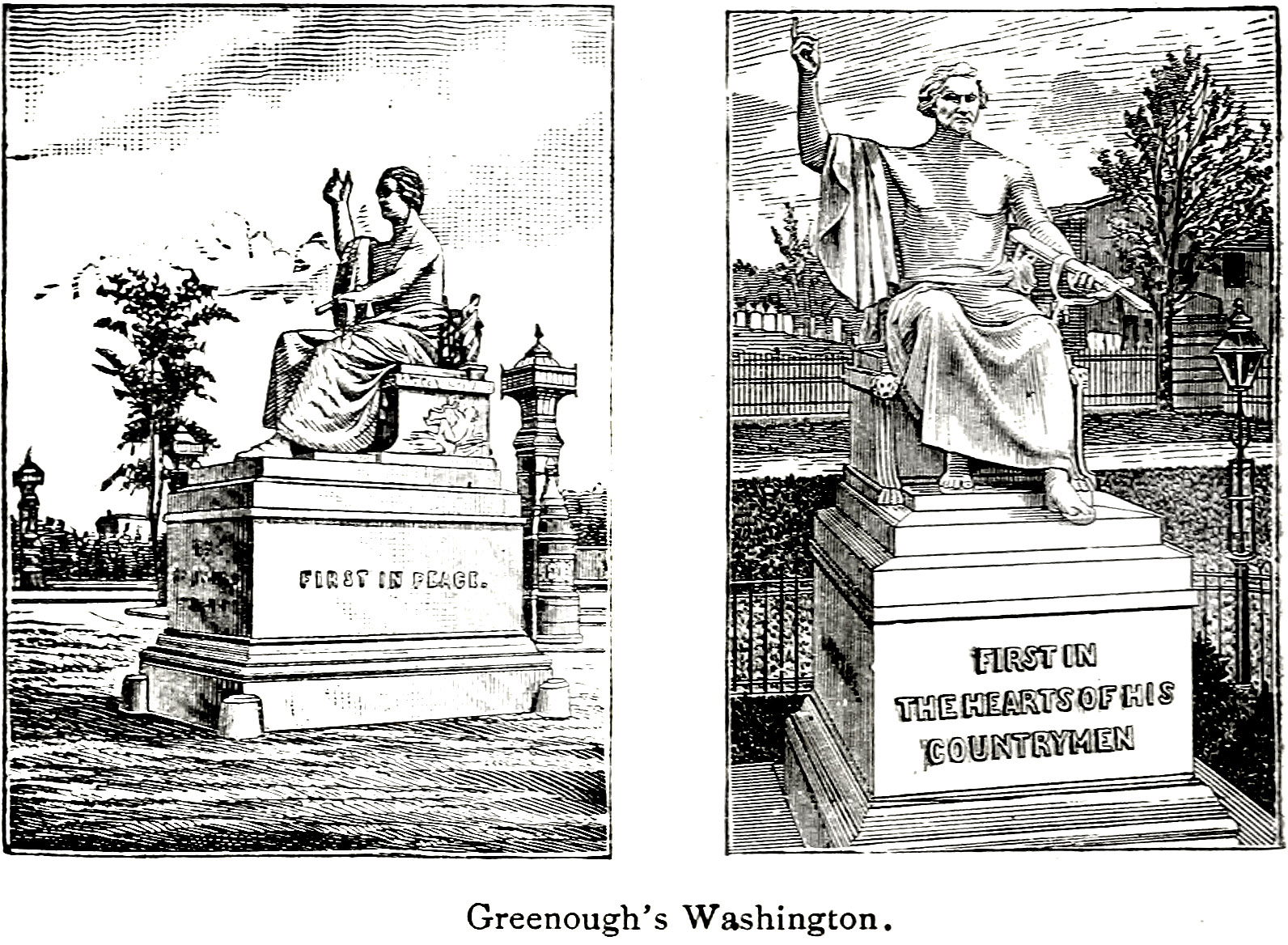Greenough's Washington

EAST CENTRAL PORTICO OF THE CAPITOL.
Immediately opposite and facing this Portico is Greenough's Statue of Washington. It is of colossal size, and has an interesting history. It was ordered in 1832, to be placed in the centre of the Rotunda, over the tomb or vaulted chamber built for the reception of the remains of Washington two stories beneath. The statue was finished in 1840, and the artist received $20,000 while working on it. Two other bills in connection with it were paid him, amounting to $10,435.85. The expenses of transportation from Italy, its erection in the Rotunda, of its subsequent removals, and of the pedestal upon which it is placed s have absorbed at least $13,000 more.
The chair upon which the figure sits is ornamented with the acanthus leaf and lions' heads. A small figure of Columbus and another of an Indian chief lean against its back. On the pedestal is inscribed the deserved eulogy on Washington, pronounced by Governor Henry Lee: “First in war— first in peace— first in the hearts of his countrymen.”
Washington sits in majesty, a sort of Jupiter, His person is nude to the waist, In his left hand is a sheathed sword, and With his right he points towards heaven.
On the right side of the chair is a basso-relievo of Phoebus-Apollo driving the chariot of the sun around the world —thus representing, in pictured allegory, the rising sun, the crest of the national arms of the United States. On the left side of the chair is depicted the infant Hercules strangling the serpent, While Iphiclus, his feebler twin-brother, stretched on the ground, Shrinks from the contest; illustrating the genii of North and South America. On the back of the chair is inscribed: “Simulacrum istud ad magnum Libertatus exemplum nec sine ipsa duraturum, Horatio Greenough, facicbat.” This has been translated by a distinguished scholar into —
“This statue cast in Freedom's stately form.
And by her e'er upheld.
“Horatio Greenough, Sculptor.”
Roose's Companion and Guide to Washington and Vicinity by S. D. Wyeth and William S. Roose, 1885.